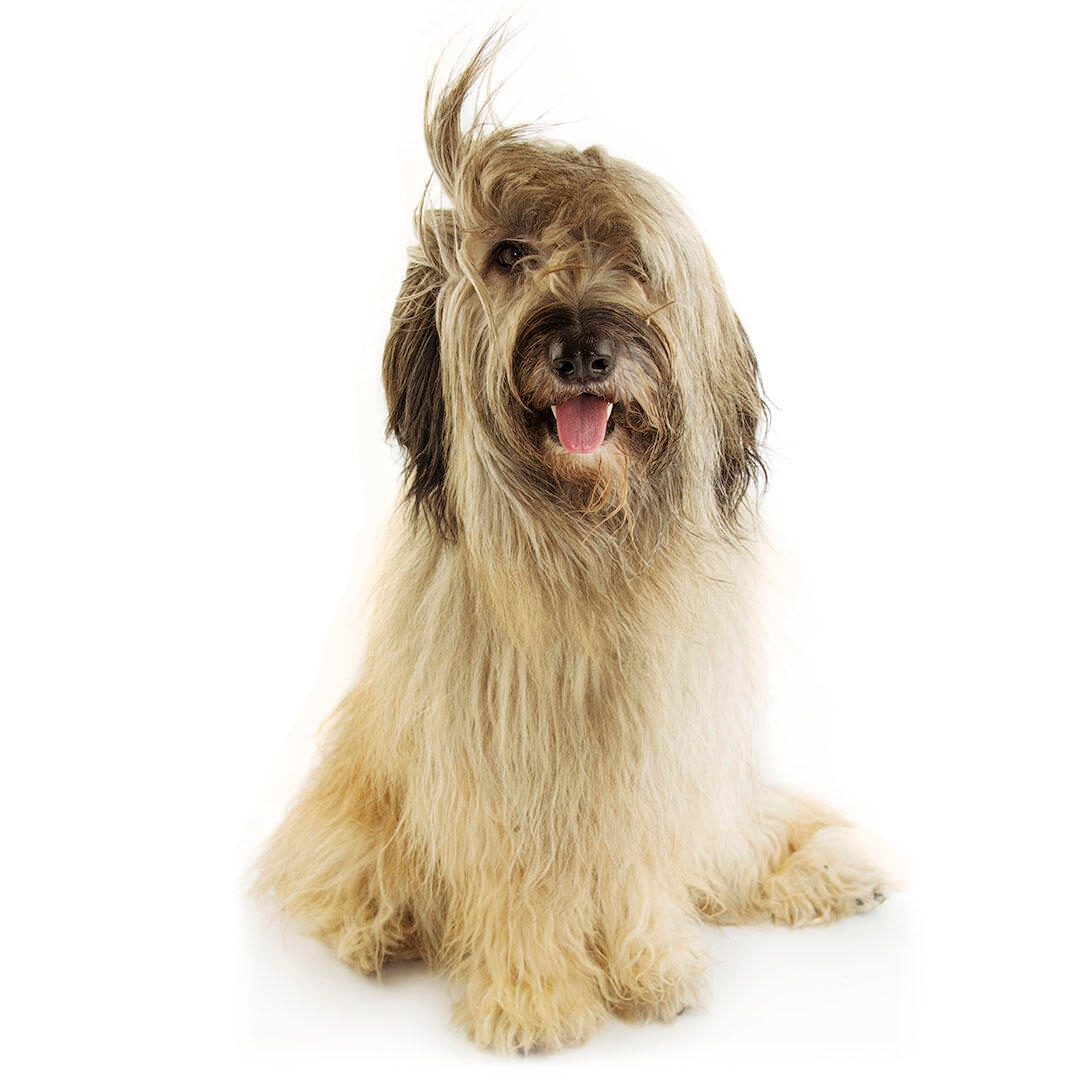
| Family-friendly: | 5/5 |
| Exercise needs: | 5/5 |
| Easy to train: | 5/5 |
| Tolerates being alone: | 4/5 |
| Likes other pets: | 0/5 |
| Energy level: | 5/5 |
| Grooming needs: | 3/5 |
| Shedding: | 2/5 |
The Catalan Sheepdog breed can suffer from:
- Hip dysplasia
Priority Kennel Club health schemes and testing:
- Hip dysplasia screening scheme
Clever, quick witted and sure of themselves, the Catalan can work livestock by themselves, but at home they are loyal and lovable with family. They take a while to warm up to strangers, and the guarding instinct is still strong, although Catalans prefer to take a watchful eye, rather than react aggressively. Easily capable of excelling in a number of sports, the modern Catalan Sheepdog will be a fun and engaging companion for those interested in dog related competition and activity who are experienced with quick-thinking sensitive dogs.
| Family-friendly: | 5/5 |
| Exercise needs: | 5/5 |
| Easy to train: | 5/5 |
| Tolerates being alone: | 4/5 |
| Likes other pets: | 0/5 |
| Energy level: | 5/5 |
| Grooming needs: | 3/5 |
| Shedding: | 2/5 |
Bred to herd and look after flocks of sheep in the Catalan regions of Spain, the Catalan Sheepdog is likely to share the same roots as the Briard, Picardy Sheepdog, Pyrenean Sheepdog and the Beauceron.
Legend has it that Charlemagne (Charles the Great, King of the Franks, 771-814AD) was accompanied everywhere with two large, long coated black dogs that looked remarkably like the modern Briard. Tapestries from the 8th and 12th Century show him with these dogs and the legend goes that as he moved south, his dogs went with him. And as they travelled these dogs would have mated with the local bitches, who would have been useful, working dogs, and it is said lies the creation of the Catalan Sheepdog. Whether this is true or not, only the dogs will ever know!
For centuries the Catalan Sheepdog has been a versatile working dog, a herder of livestock, guarder of farms and homes, even a messenger and sentry during the Spanish Civil War. As with many breeds, the World Wars caused a decline in numbers, due to dogs being killed, dogs simply not being bred from, and the Catalan Sheepdog also suffered after WW2 when many farms closed. In the 1950’s and 1960’s, many farmers left the rural life and moved to take more reliable, easier and better paying work in the towns and cities.
Fortunately, the breed has its supporters and thanks to their efforts in the 1970’s they are now recognised by the FCI and the UK Kennel Club, although still a rarity in the UK.
This is a livestock working and guarding breed – if you cannot provide a rural home, secure fencing and livestock to work and guard, you’ll need to be very keen on long walks and lots of training. This is still very much a working breed so non-working homes must provide a suitable outlet for, and understand, this breed’s natural desires. You’ll also need some grooming skills, older children or a child free home, and plenty of time.
Two hours of walking, some training and some games, spread out across the day, will keep a Catalan happy. They will of course, not turn down the offer of more, but should certainly not be offered less. A happy Catalan Sheepdog is one with a job to do, whether that’s agility, obedience, flyball, they really don’t mind as long as they have something to occupy themselves with.
Better suited to the medium to large rural or rural suburban home, with a large and well fenced garden. Probably not ideal for the urban dweller, they will alert bark to anything they deem suspicious and this could prove problematic with neighbours.
Your dog's diet needs to have the right balance of all the main nutrient groups including a constant supply of fresh water. It's important to conduct regular body condition scores to ensure you keep your dog in ideal shape and remember to feed them at least twice daily and in accordance with the feeding guidelines of their particular food.
The Catalan needs a thorough brushing several times a week to clear out dead hair and undercoat and stimulate the skin. Remember to check eyes, ears and paws for debris or foreign matter after each walk as this hairy coated dog can pick up a lot of ‘extras’ on each walk.
Training the Catalan is easy if you understand how to use positive reinforcement-based methods, and engage with your dog. They will work their furry little socks off for someone they love, trust and respect, and there really isn’t a job the Catalan cannot do if you, and they, put your minds to it! It is important to socialise well with other people, livestock and pets, and to train a very strong recall as the Catalan can easily make decisions by themselves, particularly if you seem to be dithering over what to do next!
For those familiar with the more independent herding breeds, the Catalan may be an enormously rewarding companion. Better suited to those with older children as keeping a Catalan entertained will take up significant time each day.
While many dogs are traditionally thought of as being good with children, all dogs and children need to be taught to get on with and respect each other, and be safe together. Even so, dogs and young children should never be left alone together and adults should supervise all interactions between them.